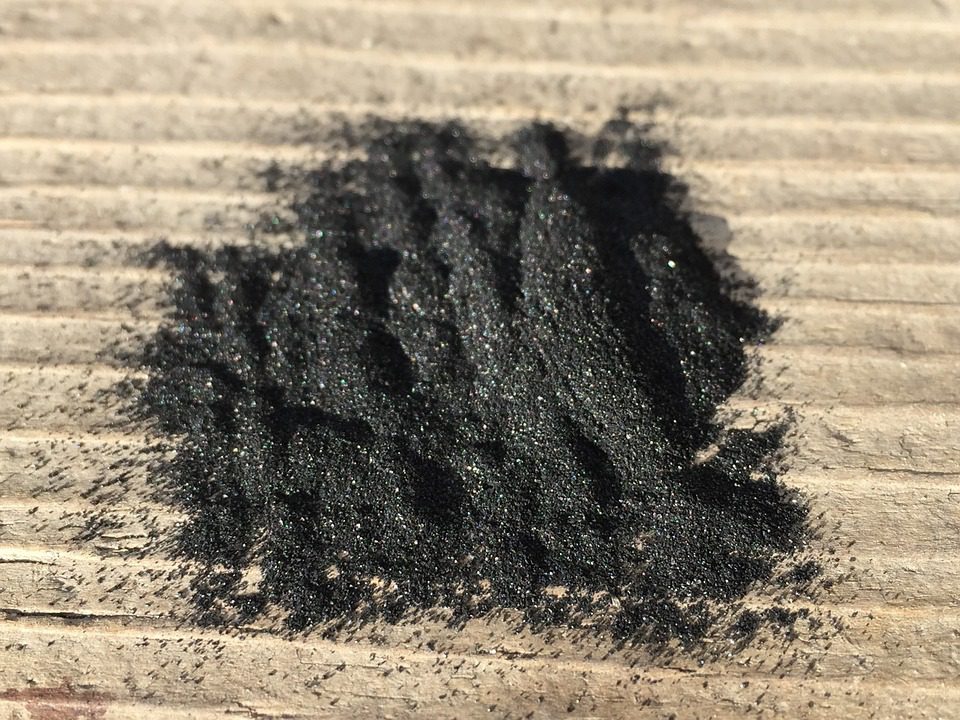Have you ever used one of those magic erasers? You know, the little white sponges that miraculously remove tough stains, dirt, and grime from your walls, countertops, and shower floors. Essentially, they are a melamine foam that is made up of teeny tiny shards that act like extra-fine grit sandpaper. When you scrub lightly on, say, the crayon marks left behind by your budding toddler artist, these little shards just scratch off that top layer – in this instance, the crayon.

(Pixabay / mommyandlove)
I thought this article was about charcoal teeth whiteners…
It is…and you’ll soon see the connection. But stick with me a little longer while I introduce the idea of charcoal for teeth lightening. If you’ve been active on social media in the last few years, you’ve probably stumbled across the concept of activated charcoal as an alternative to chemical teeth whiteners. The proponents of activated charcoal whiteners claim that activated charcoal gives them better whitening results than traditional store bought or dentist administered whiteners only sans chemicals. It seems a little too good to be true, right?
Right.
Activated charcoal is an incredible compound, to be sure. Throughout history, it has been used as an antiseptic, a means to absorb ingested poisons, the component in gas masks that filters air, and as a water purifier. It’s a little bit different than the stuff left behind in the grill after you’ve burned some hot dogs, but the two compounds share the same basic structure.
The difference is that activated charcoal is created when natural substances are burned slowly and at high heat. This high heat “activates” the charcoal to make it really absorbent for things that humans consider toxic, but since our bodies can’t absorb the charcoal, it just passes right through after binding to the harmful substances.
That sounds like the perfect solution for my stained teeth!
Unfortunately, it isn’t. You’d think that its absorbent properties would just lift those stains right up off of your teeth, but that’s not the only thing doing the whitening. The gritty nature of activated charcoal means that when you’re brushing with a charcoal toothpaste, you’re actually scrubbing off that top stained layer of enamel very slowly. Basically, you are doing to your teeth what the magic eraser is doing to the crayon mark on the wall. A-ha! There’s that connection I was promising.
Now, if you scrub that crayon a little too aggressively, you might notice that a little bit of paint starts to peel up, too. If that bothers you, you can always dab on a little bit of paint to cover up the mark, but you can’t do that to your teeth. Your enamel isn’t something that grows back: you get what you get, and you don’t throw a fit. If you scrub off too much of your enamel, your teeth might look even dingier because you’ve exposed the dentin which is softer and more yellow. After a certain point, your only option left is to have restorative dental procedures to make your smile whiter.
While there isn’t any conclusive evidence from the FDA for or against using activated charcoal toothpaste to whiten teeth, the American Dental Association does not encourage people to use it, saying that more research is needed. Without tacit approval from either of these organizations, it makes sense to steer clear of charcoal teeth whiteners.
So do I have any other natural alternatives?
Activated Charcoal (but no brushing)
I know, I know. I just spent 500 words trying to convince you not to use activated charcoal toothpaste, but you could try using a modified approach. Instead of brushing the charcoal with your toothbrush, you could simply smear the paste across your teeth and let it sit. Use discretion when going this route, and be careful not to rub it back and forth across your teeth. There is no doubt that activated charcoal has absorbent properties, so letting it sit on stained teeth a couple of times a week might yield some whitening results.
Diluted Hydrogen Peroxide
That little brown bottle that your mom squirted over your scraped knees growing up might be able to help you achieve a whiter smile. Not only does it disinfect your mouth, but it bleaches out some of those unsightly stains. You have to be careful, however, that you only swish a few times a week and use a concentration of AT MOST 3%; otherwise, you risk doing damage to your gums and teeth.
Proper Diet and Dental Hygiene
This method is a little bit more indirect than some of the other whitening methods. For this one, you should eat more fruits and vegetables. These fibrous foods scrub your teeth, so plaque can’t stick around to dull their color.
Also, you should limit foods that are notorious for staining your teeth. It doesn’t mean that you can’t drink red wine, tea, soda, or coffee, but you should try to rinse your mouth out with water after indulging, or drink the offending beverages through a straw.
Practicing good dental hygiene is another good way to keep your smile fresh and white. Floss daily, and rinse with a fluoride mouthwash. Many studies have shown the positive effect of toothpastes containing baking soda on whitening teeth, so if you don’t want to go full out with a whitening procedure, a whitening toothpaste can help you fight cavities while brightening your smile.
